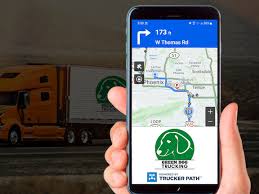Safety is the bedrock—the pillar upon which every mile in trucking is heaped. The truck driver holds the biggest responsibility, though to others more than to oneself, since almost every other soul out there is just out on the road. You can gain knowledge of good practices from the best apps for trucking which will help ensure that your safeness, your cargo’s safeness, and everyone else’s are in the same situation.
Here’s an all-you-need-to-know guide on the best safety practices every truck driver should know, making the road much safer for everybody else.

1. Pre-trip Inspections
A good pre-trip inspection of your vehicle must be conducted before hitting the road. This isn’t because of compliance but for your safety. Thorough inspection should be done to all parts at:
Tires: Check cuts, and cracks, and that they are inflated. Moreover, uneven wear pattern in tires indicates an alignment problem or other suspension issues
Brakes: Check the braking system. Carefully inspect the air brake system. Ensure that all the air brakes have their air pressure.
Lights, signals: Check all the lights, signals, head, tail, and flasher lights.
Fluids: Fluid levels and right placement. Check for leak drips under the vehicle.
Mirrors and Windshields: Adjust the mirrors for the best view and clean the windscreen from any possible chips or cracks.
2. Defensive Driving: Be Ahead of Any Possible Danger
Due to the size and weight of the driven vehicle, a truck driver is bound to have defensive driving as a necessity. The following are major defensive driving practices:
Keep a Safe Following Distance: Keep a distance of at least six seconds behind the vehicle upfront. This will give you enough time to react in case the vehicle in front is brought to an immediate stop.
Watch out for hazards: The anticipation of everything happening around is not just being reactive; think about that car making that quick turn left in front of you, litter on the highway, or rain coming from nowhere. Be ready for anything that happens.
3. Identification and Management of Fatigue
That slows down your reflexes and impairs your judgment. Here’s how to overcome it:
Hours of Service: These laws keep you safe from yourself and fatigue. Learn them; respect them; you will go a long, not making your career dangerous, and you will not be operating illegally in the process.
Take breaks. Do not go to the wall. Take scheduled breaks every 2 hours—at least.
Get quality sleep: You always want to make sure you get at least 7-9 hours of sleep before a long drive. If time permits, take naps during the journey, especially when you’re feeling drowsy.
4. Proper Use of Technology
Technology is becoming part now and then in trucking and supplier tools, arguable for improved safety given effective use. However, at the same time, one should know how to responsibly use these tools. The best apps for trucking can be used to gain knowledge about the use of tools.
GPS Navigation: Although this can be a lifesaver, do not rely on a GPS unit so heavily that it will automatically take you wherever you want to go or help you in finding every receiver. Double-check routing with paper maps, keeping in mind such information as low bridges, bridge indicators, weight limitations, and more, that a GPS may not always take into account.
Dashcams: This could be essential video evidence in case of any collision to assist the driver. One will be wise to place it in a good road view. Talk Hands-Free: Sometimes I talk on the phone while driving, but only when using hands-free devices.

5. Driving Safely by Exercising Professional Communication
The best apps for trucking will help you to get good communication to maintain safety. Good communication in itself is manifested by the awareness of safety:
Use Your CB Radio: Yes, it may seem archaic, but CBs do have some real-world applications for reaching out to other truckers, especially when cell reception may be spotty. Signal Ahead: Now signal your intention of what you are about to do—lanes you are going to change into, turns or stops you are going to make.
Make eye contact with other motorists, especially at junctions or while turning, so that they know you have noticed them so that they have a chance of guessing what you will do
Hazard Lights: In fast flashing hazard lights, there could be a warning signal to stop or any issue ahead due to you if the conditions of traffic or weather are too severe to slow down the already superior system of traffic.
Dictionary sentence
Good communication will also avoid confusing incidences and accidents, hence ensuring that everybody else stays safe on the road.

6. Health and safety for yourself
Your health is as essential to the well-being of the truck: a fit driver will be far more alert and attentive, and far better able to deal with the stress of long hauls.
Eat right: Make healthy choices in your meals and snacks. Fast food and sugary drinks can only result in binges of energy elevation and crashes to the system.
Stress Management: The workload tends to be heavy, and the time frames are compressing. Take the opportunity to de-compress by either listening to your favorite music, sitting in meditation, or deep breathing.
Conclusion
Safety is not a list of rules. It is a state of mind. Indeed, taking care of good habits is a lifetime activity that needs the best possible care and doing with the highest level of commitment at each instance. Meticulous is among the best apps for trucking which will not only ensure the safety and well-being of a professional truck driver but also make sure one contributes toward the roads’ safety for all other users. Build these strategies into your day, and every mile you drive will be as safe as possible.
Safety first—That’s the underpinning of a successful, sustainable career in trucking.

